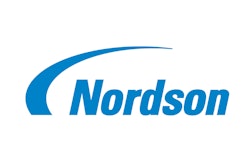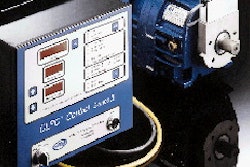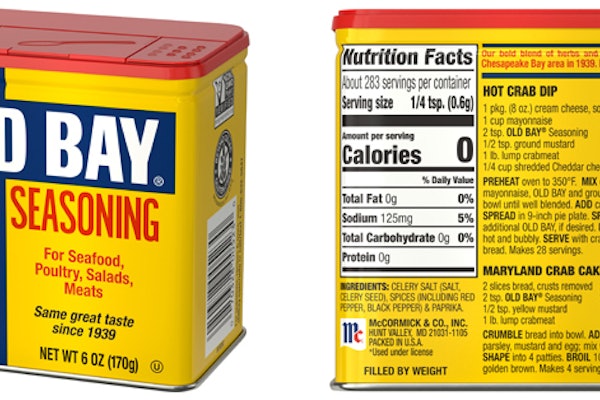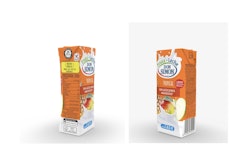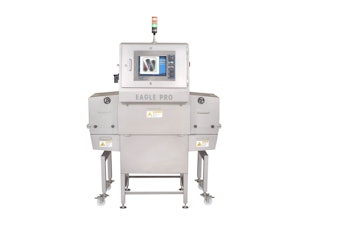After installing a new tray-packing and shrink-bundling line for canned tomato products, Northumberland, PA-based Furman Foods has reduced time required for changeover from three hours down to 45 minutes. While that may not seem especially fast to some, plant engineer Ralph Lambert says it's fast given the amount of equipment involved. "Nobody else's machine in this class would be faster," he opines.
Although changeover time was an important factor in purchasing the line, supplied by Arpac L.P. (Schiller Park, IL), throughput was just as imperative. The new continuous-motion line reliably cranks out 12-pack shrink-bundled trays of cans at speeds of 45 to 55 tray-packs/min, says Lambert. That's compared to 35/min on the line it replaced. Plus the new equipment only requires two workers vs three previously.
"We run a britestock operation," says Lambert. "We can vegetables [mostly tomatoes], put them on pallets with no label and inventory them. Then we will bring them out as the orders come in, and label, tray-pack, shrink and palletize." Furman packs product under its own label as well as for private-label accounts.
Although the line produces mostly 12-packs (with some 24-packs for the smaller can sizes), the fast-change capability was needed to accommodate the range of can sizes, from a 202x308 6-oz can to a 401x411 28-oz can. At the time of Packaging World's visit, the line was packing 15-oz cans of the Furmano-brand Italian-style tomatoes.
Fast changeover
Key to the line's fast changeover capability is the collator, which converts an incoming mass-flow of cans into groups of 12 or 24 (either a 4x3 or 4x6 pattern). Instead of relying on traditional lug chains to isolate groups of cans, the collator uses what Arpac refers to as a pair of servo-driven "caterpillar" side lugs.
The key difference: There are no chains to remove and install for different can sizes. Instead, servo motors automatically change the distance between the lugs in the machine direction after an operator selects a new can size from the touchscreen operator interface. Simple handwheels are used to widen the distance in the cross direction, between the side lug belts that contain the cans on the left and right sides of the conveyor.
Handwheel adjustments are also used elsewhere on the machine for required manual adjustments. "It's essentially a no-tool changeover machine," says Lambert.
Adjustments that occur automatically when an operator selects a new can size include the speed and timing of the machine's servo-driven conveyors and flight bars. The timing and quantity of hot melt adhesive dispensed by the Nordson (Duluth, GA) hot melt applicator is also changed electronically.
The shrink bundler is also designed for minimal downtime. Instead of using one roll, the bundler draws film from two rolls simultaneously, forming front and rear "walls" of film that are sealed together and shrunk around each tray pack. Further, two additional rolls can be mounted right on the machine in a standby position, reducing downtime to a quick five-minute splice. There's nothing especially unique about the low-density polyethylene 1.75-mil film, says Furman.
High throughput
Because the line is a continuous-motion system, it allows a higher throughput compared to intermittent-motion machines, says Lambert.
Illustrating how the machine maximizes throughput is the machine's ability to double-stack five trays at a time instead of one. Another example is the traveling seal bars on the wrapper, which dwell on the heat-seal as they move with the tray.
Another important feature of the machine is the data acquisition software that Arpac wrote and which runs on the machine's PLC from Allen-Bradley (Milwaukee, WI). Statistics on the machine's performance and operational history can be downloaded to an external computer for analysis, although Lambert says line supervisors typically just call up the information and view it on the touchscreen display.
A final benefit of the machine is the way it tightly folds the trays around the cans for a tight shrink pack. A grouping of cans is first loaded onto a flat tray blank. The machine uses what Arpac refers to as a cam-folding pocket that tightens the blank around the cans so that there's no play once the trays are glued. That reduces the potential for label scuffing and can denting associated with loose cans in tray packs. Lambert confirms that the machine produces a tight pack.
Mass-flow infeed
In operation, filled and sealed cans are depalletized and sent through a high-speed wraparound labeler. Next they enter a mass-flow accumulating conveyor that Furman built itself. Cans then enter a short mass-flow conveyor that's part of the Arpac machine.
The first station is the collator section, which splits the flow with a center divider that forces cans into two streams of two-across cans that are interleaved or staggered against one another. The forward-moving caterpillar lugs stick out from the sides and isolate the correct number of cans--typically 12--and move them toward a discharge conveyor. There a traveling flight bar picks up the group and squares them up.
The flight bar pushes the cans onto a waiting tray blank that's picked up by vacuum cups from a magazine, dropped, and pushed into position. After loading, the flaps are folded and glued around the cans, all in a continuous motion. The B-flute corrugated trays are the same as before, says Lambert.
Trays are then conveyed past ink-jet coders mounted on both sides of the conveyor. Furman uses two pairs of Series 1 large-character ink-jet coders from Diagraph (St. Louis, MO) that provide the capability of coding all four sides of the tray. That's done via a conveyor section that optionally rotates trays 90 between the first and second pair of coders.
Next trays enter the double-stacker. After five trays accumulate on a live roller conveyor, fingers in between the rollers rise up and elevate all five cases. Another five accumulate underneath, and the fingers are withdrawn, leaving the top layer of cases sitting on the bottom layer. The double-stacking mechanism can also be disabled, allowing cases to simply convey right through for single-height versions.
Finally, trays enter the shrink bundler where they convey into a curtain of film. The film passes over and under the tray and is cut and heat-sealed. After shrinking, this creates a bull's-eye pack with ends used for tray handling. Packs are conveyed to an automatic palletizer.
The line has been operating successfully for about a year and a half, says Lambert, and has proven itself in a real-world production environment.







